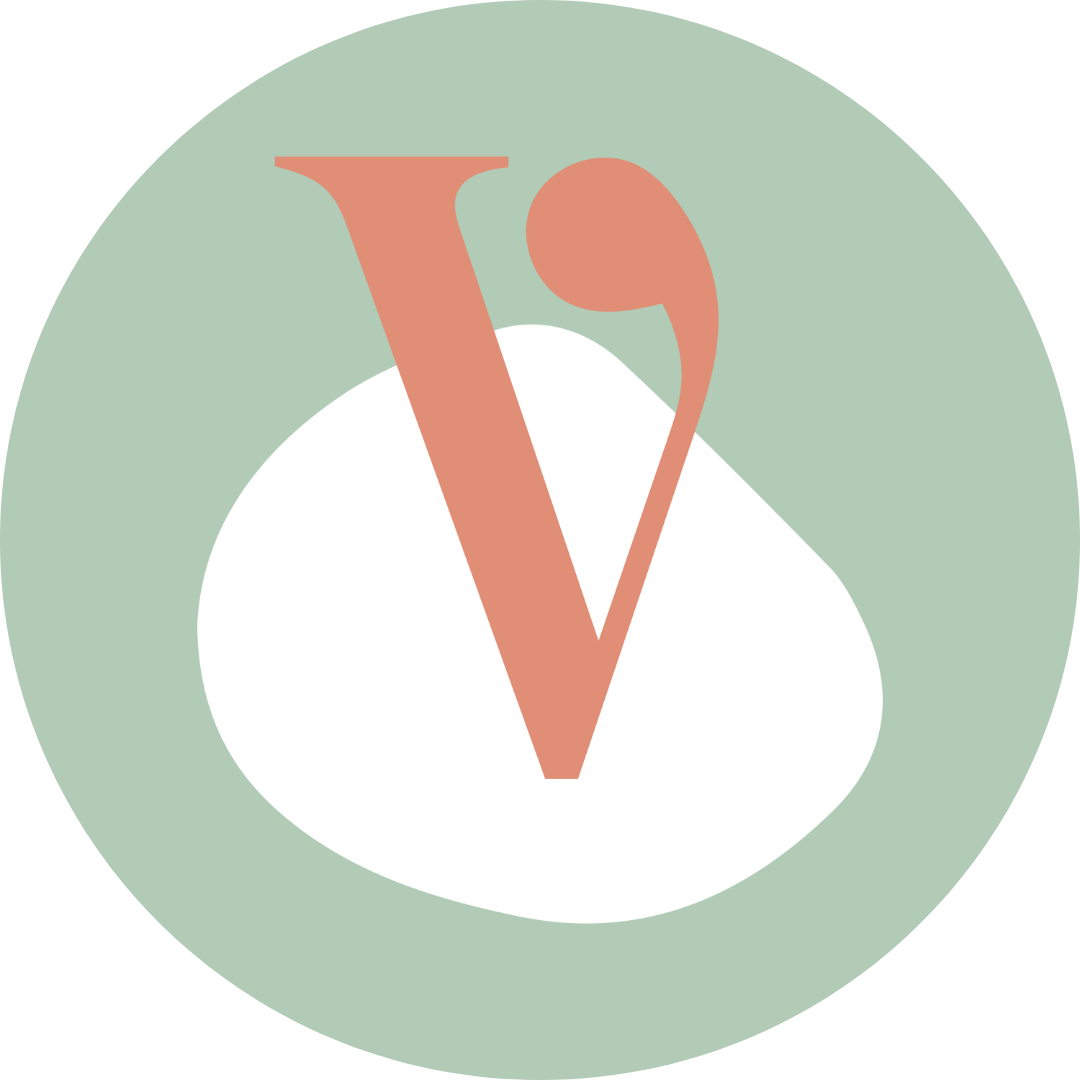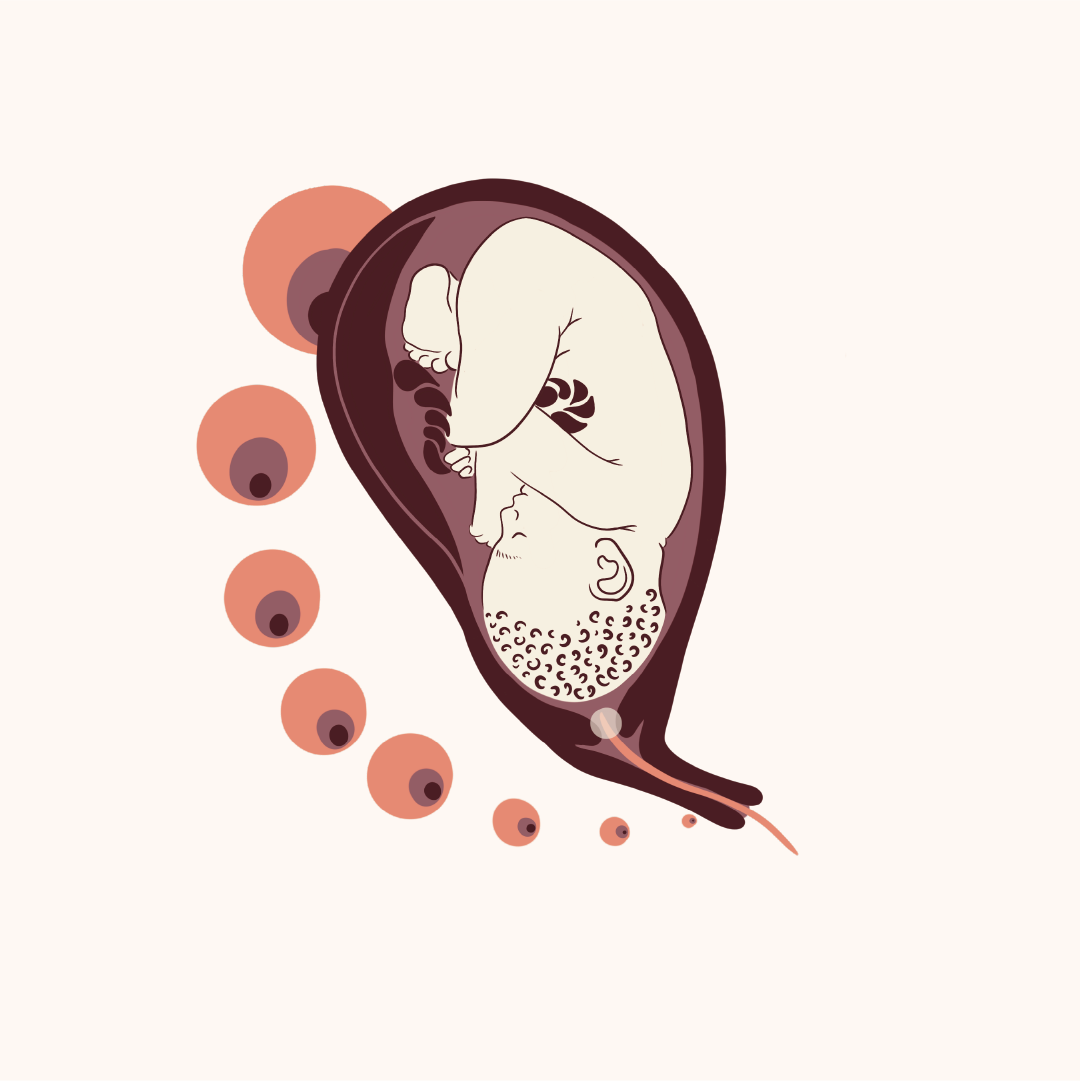Geschreven door Marlous van der Waal
Gepubliceerd op 18 januari 2024
De meeste baringen starten vanzelf. Soms ontstaat er tijdens de zwangerschap een reden om de baring niet af te wachten en wordt geadviseerd om de baring in te leiden. De baring wordt dan kunstmatig op gang gebracht. Dat heeft effect op de duur, beleving en eventuele interventies die nodig zijn bij de baring. Op welke manier wordt ingeleid hangt af van in hoeverre het lichaam van de zwangere al klaar is om te baren. Soms is alleen het breken van de vliezen voldoende. In andere situaties wordt medicatie of een andere mechanische manier van inleiden gebruikt.
Wat is inleiden precies? Wanneer wordt inleiden geadviseerd en waarom? Wat zijn daarvan de voor- en nadelen? En zijn er ook alternatieven? Deze en andere vragen worden beantwoord in dit artikel.
Alfirevic, Z., Kelly, A. J., & Dowswell, T. (2009). Intravenous oxytocin alone for cervical ripening and induction of labour. Cochrane Database of Systematic Reviews. https://doi.org/10.1002/14651858.cd003246.pub2
Belghiti, J., Kayem, G., Dupont, C., Rudigoz, R. C., Bouvier-Colle, M. H., & Deneux-Tharaux, C. (2011). Oxytocin during labour and risk of severe postpartum haemorrhage: a population-based, cohort-nested case-control study. BMJ open, 1(2), e000514. https://doi.org/10.1136/bmjopen-2011-000514
Boulvain, M. (2005). Membrane sweeping for induction of labour - Boulvain, M - 2005 | Cochrane Library. https://www.cochranelibrary.com/cdsr/doi/10.1002/14651858.CD000451.pub2/abstract
Budden, A., Chen, L. J., & Henry, A. (2014). High-dose versus low-dose oxytocin infusion regimens for induction of labour at term. Cochrane Database of Systematic Reviews, 2016(3). https://doi.org/10.1002/14651858.cd009701.pub2
Buckley (2015). Hormonal Physiology of Childbearing: Evidence and Implications for Women, Babies, and Maternity Care Chen, W., Xue, J., Peprah, M., Wen, S., Walker, M., Gao, Y., & Tang, Y. (2015). A systematic review and network meta-analysis comparing the use of Foley catheters, misoprostol, and dinoprostone for cervical ripening in the induction of labour. BJOG: An International Journal of Obstetrics & Gynaecology, 123(3), 346–354. https://doi.org/10.1111/1471-0528.13456
Christensson, K., Nilsson, B. A., Stock, S., Matthiesen, A. S., & Uvnäs‐Moberg, K. (1989). Effect of Nipple Stimulation on Uterine Activity and on Plasma Levels of Oxytocin in Full Term, Healthy, Pregnant Women. Acta Obstetricia Et Gynecologica Scandinavica, 68(3), 205–210. https://doi.org/10.3109/00016348909020990
Dahlen, H. G., Thornton, C., Downe, S., de Jonge, A., Seijmonsbergen-Schermers, A., Tracy, S., Tracy, M., Bisits, A., & Peters, L. (2021). Intrapartum interventions and outcomes for women and children following induction of labour at term in uncomplicated pregnancies: a 16-year population-based linked data study. BMJ Open, 11(6), e047040. https://doi.org/10.1136/bmjopen-2020-047040
Demirel, G., & Guler, H. (2015). The Effect of Uterine and Nipple Stimulation on Induction With Oxytocin and the Labor Process. Worldviews on Evidence-Based Nursing, 12(5), 273–280. https://doi.org/10.1111/wvn.12116
Diederen, M., Gommers, J., Wilkinson, C., Turnbull, D., & Mol, B. (2018). Safety of the balloon catheter for cervical ripening in outpatient care: complications during the period from insertion to expulsion of a balloon catheter in the process of labour induction: a systematic review. BJOG: An International Journal of Obstetrics & Gynaecology, 125(9), 1086–1095. https://doi.org/10.1111/1471-0528.15047
El-Gawad, S. A. (2014). Castor Oil Safety and Effectiveness on Labour Induction and Neonatal Outcome. ResearchGate. https://www.researchgate.net/publication/261437700_Castor_Oil_Safety_and_Effectiveness_on_Labour_Induction_and_Neonatal_Outcome
Evans, M. (2009). Postdates pregnancy and complementary therapies. Complementary Therapies in Clinical Practice, 15(4), 220–224. https://doi.org/10.1016/j.ctcp.2009.09.002
FMS/NVOG (2012). Hypertensieve aandoeningen in de zwangerschap. Gestel, V. I., & Roumen, F. (1998, 28 januari). “Weeënstorm” na cervixrijping met prostaglandinegel. NTvG. https://www.ntvg.nl/artikelen/weeenstorm-na-cervixrijping-met-prostaglandinegel
Gilad, R., Hochner, H., Savitsky, B., Porat, S., & Hochner-Celnikier, D. (2018). Castor oil for induction of labor in post-date pregnancies: A randomized controlled trial. Women and Birth, 31(1), e26–e31. https://doi.org/10.1016/j.wombi.2017.06.010
Goodarzi, B., Seijmonsbergen‐Schermers, A., van Rijn, M., Shah, N., Franx, A., & de Jonge, A. (2022). Maternal characteristics as indications for routine induction of labor: A nationwide retrospective cohort study. Birth, 49(3), 569–581. https://doi.org/10.1111/birt.12628
Goodarzi, B. (2023). Putting risk in its place: The complexity of risk selection in maternal and newborn care. [Phd-Thesis - Research and graduation internal, Vrije Universiteit Amsterdam]. s.n.
Hannah, M. E., Ohlsson, A., Farine, D., Hewson, S. A., Hodnett, E. D., Myhr, T. L., Wang, E. E., Weston, J. A., & Willan, A. R. (1996). Induction of labor compared with expectant management for prelabor rupture of the membranes at term. TERMPROM Study Group. The New England journal of medicine, 334(16), 1005–1010. https://doi.org/10.1056/NEJM199604183341601
Henderson, J., & Redshaw, M. (2013). Women’s experience of induction of labor: a mixed methods study. Acta Obstetricia et Gynecologica Scandinavica, n/a-n/a. https://doi.org/10.1111/aogs.12211
Hill, M. J., McWilliams, G. D., Garcia-Sur, D., Chen, B., Munroe, M., & Hoeldtke, N. J. (2008). The Effect of Membrane Sweeping on Prelabor Rupture of Membranes. Obstetrics & Gynecology, 111(6), 1313–1319. https://doi.org/10.1097/aog.0b013e31816fdcf3
Insel, T. R. (2010). The Challenge of Translation in Social Neuroscience: A Review of Oxytocin, Vasopressin, and Affiliative Behavior. Neuron, 65(6), 768–779. https://doi.org/10.1016/j.neuron.2010.03.005
Jobst, A., Krause, D., Maiwald, C., Härtl, K., Myint, A. M., Kästner, R., Obermeier, M., Padberg, F., Brücklmeier, B., Weidinger, E., Kieper, S., Schwarz, M., Zill, P., & Müller, N. (2016). Oxytocin course over pregnancy and postpartum period and the association with postpartum depressive symptoms. Archives of women’s mental health, 19(4), 571–579. https://doi.org/10.1007/s00737-016-0644-2
Jozwiak, M, ten Eikelder, M., Rengerink, K., de Groot, C., Feitsma, H., Spaanderman, M., van Pampus, M., de Leeuw, J., Mol, B., Bloemenkamp, K., . (2013). Foley Catheter versus Vaginal Misoprostol: Randomized Controlled Trial (PROBAAT-M Study) and Systematic Review and Meta-Analysis of Literature. American Journal of Perinatology, 31(02), 145–156. https://doi.org/10.1055/s-0033-1341573
Foley Catheter versus Vaginal Misoprostol: Randomized Controlled Trial (PROBAAT-M Study) and Systematic Review and Meta-Analysis of Literature
Kavanagh, J., Kelly, A. J., & Thomas, J. (2005). Breast stimulation for cervical ripening and induction of labour. Cochrane Database of Systematic Reviews, 2010(1). https://doi.org/10.1002/14651858.cd003392.pub2
Kavanagh, J., Kelly, A. J., & Thomas, J. (2001). Sexual intercourse for cervical ripening and induction of labour. Cochrane Database of Systematic Reviews. https://doi.org/10.1002/14651858.cd003093
Kelly, A. J., Kavanagh, J., & Thomas, J. (2013). Castor oil, bath and/or enema for cervical priming and induction of labour. Cochrane Database of Systematic Reviews. https://doi.org/10.1002/14651858.cd003099.pub2
KNOV (2011). Standaard Hypertensieve aandoeningen tijdens zwangerschap, bevalling en kraamperiode. Aanbevelingen voor risicoselectie, diagnostiek en beleid. KNOV (2019). Factsheet Inleiden van de baring.
KNOV (2017). Factsheet Positieve discongruentie Lamont, K., Scott, N. W., Jones, G. T., & Bhattacharya, S. (2015). Risk of recurrent stillbirth: systematic review and meta-analysis. BMJ, 350(jun23 3), h3080–h3080. https://doi.org/10.1136/bmj.h3080
de Miranda, E., van der Bom, J., Bonsel, G., Bleker, O., & Rosendaal, F. (2006). Membrane sweeping and prevention of post-term pregnancy in low-risk pregnancies: a randomised controlled trial. BJOG: An International Journal of Obstetrics and Gynaecology, 113(4), 402–408. https://doi.org/10.1111/j.1471-0528.2006.00870.x
Moberg, U. K. (z.d.). De Oxytocine factor: benut het hormoon van onthaasting, genezing en verbondenheid. Thoeris, Uitgeverij. Moura, D., Canavarro, M. C., & Figueiredo-Braga, M. (2016). Oxytocin and depression in the perinatal period-a systematic review. Archives of women’s mental health, 19(4), 561–570. https://doi.org/10.1007/s00737-016-0643-3
NICE (2012). Inducing labour. NICE guideline. Overview | Inducing labour | Guidance | NICE
Nipple stimulation for labor augmentation. (1990, 1 juli). PubMed. https://pubmed.ncbi.nlm.nih.gov/2198350/
NVOG (2006). Richtlijn inductie van de baring
NVOG (2020). Richtlijn Methoden van inductie van de baring 2.0. NVOG (2018). Richtlijn Diabetes Mellitus en zwangerschap 3.0.
NVOG/KNOV (2013). Verminderde kindsbewegingen tijdens de zwangerschap. NVOG (2011). Richtlijn meerlingzwangerschap.
NVOG (2011). Zwangerschapscholestase. Monodisciplinaire richtlijn. https://www.nvog.nl/wp-content/uploads/2018/08/Zwangerschapscholestase-NVOG-23-3-2011.pdf
Omar, N., Tan, P., Sabir, N., Yusop, E., & Omar, S. (2012). Coitus to expedite the onset of labour: a randomised trial. BJOG: An International Journal of Obstetrics & Gynaecology, 120(3), 338–345. https://doi.org/10.1111/1471-0528.12054
Peristat. (z.d.). Geraadpleegd op 15 mei 2023, van https://peristat.nl
Peters, L. L., Thornton, C., de Jonge, A., Khashan, A., Tracy, M., Downe, S., Feijen-de Jong, E. I., & Dahlen, H. G. (2018). The effect of medical and operative birth interventions on child health outcomes in the first 28 days and up to 5 years of age: A linked data population-based cohort study. Birth, 45(4), 347–357. https://doi.org/10.1111/birt.12348
Pintucci, A., Meregalli, V., Colombo, P., & Fiorilli, A. (2014). Premature rupture of membranes at term in low risk women: how long should we wait in the "latent phase". Journal of perinatal medicine, 42(2), 189–196. https://doi.org/10.1515/jpm-2013-0017
RCOG (2001). Induction of labour. Evidence-based Clinical Guideline Number 9. Reed, R. (2019, 7 augustus). Induction: a step by step guide. MidwifeThinking. https://midwifethinking.com/2015/03/18/induction-a-step-by-step-guide/
Reed, R. (2019). Why Induction Matters (Pinter & Martin Why It Matters, 14) (1ste editie). Pinter & Martin. Rijnders, M.E.B. (2011). Interventions in midwife led care in the Netherlands to achieve optimal birth outcomes: effects and women’s experiences. Microsoft Word - Proefschrift totaal paperback definitief _3_.docx (uva.nl)
Saccone, G., Ciardulli, A., Baxter, J. K., Quiñones, J. N., Diven, L. C., Pinar, B., Maruotti, G. M., Martinelli, P., & Berghella, V. (2017). Discontinuing Oxytocin Infusion in the Active Phase of Labor. Obstetrics & Gynecology, 130(5), 1090–1096. https://doi.org/10.1097/aog.0000000000002325
Smith, C. A., Armour, M., & Dahlen, H. G. (2017). Acupuncture or acupressure for induction of labour. Cochrane Database of Systematic Reviews, 2017(10). https://doi.org/10.1002/14651858.cd002962.pub4
Schwarz, C., Gross, M.M., Heusser, P., Berger, B. (2016). Women’s perceptions of induction of labour outcomes: Results of an online-survey in Germany. Mifwifery. 2016 Apr;35:3-10. https://doi.org/10.1016/j.midw.2016.02.002
Selo-Ojeme, D., Rogers, C., Mohanty, A., Zaidi, N., Villar, R., & Shangaris, P. (2010). Is induced labour in the nullipara associated with more maternal and perinatal morbidity? Archives of Gynecology and Obstetrics, 284(2), 337–341. https://doi.org/10.1007/s00404-010-1671-2
Smith, C. A. (2003). Homoeopathy for induction of labour. Cochrane Database of Systematic Reviews, 2010(3). https://doi.org/10.1002/14651858.cd003399
Takács, L., Seidlerová, J. M., Štěrbová, Z., Čepický, P., & Havlíček, J. (2019). The effects of intrapartum synthetic oxytocin on maternal postpartum mood: findings from a prospective observational study. Archives of women’s mental health, 22(4), 485–491. https://doi.org/10.1007/s00737-018-0913-3
Thomas, J., Fairclough, A., Kavanagh, J., & Kelly, A. J. (2014). Vaginal prostaglandin (PGE2 and PGF2a) for induction of labour at term. Cochrane Database of Systematic Reviews. https://doi.org/10.1002/14651858.cd003101.pub3
Thul, T. A., Corwin, E. J., Carlson, N. S., Brennan, P. A., & Young, L. J. (2020). Oxytocin and postpartum depression: A systematic review. Psychoneuroendocrinology, 120, 104793. https://doi.org/10.1016/j.psyneuen.2020.104793
Tunaru, S., Althoff, T. F., Nüsing, R. M., Diener, M., & Offermanns, S. (2012). Castor oil induces laxation and uterus contraction via ricinoleic acid activating prostaglandin EP 3 receptors. Proceedings of the National Academy of Sciences of the United States of America, 109(23), 9179–9184. https://doi.org/10.1073/pnas.1201627109
Waugh, A., & Grant, A. (2021). Ross en Wilson Anatomie en Fysiologie in gezondheid en ziekte (13th edition). Elsevier Gezondheidszorg.
WHO (2018). WHO recommendations on induction of labour at or beyond term. WHO recommendations for augmentation of labour [Internet]. Geneve: World Health Organisation; 2014 p. 20-21. Available from: https://apps.who.int/iris/handle/10665/112826
Wolfhagen, F. H. J., Engelkens, H. J. H., & Van Buren, H. R. (1998). De pathofysiologie en behandeling van cholestatische jeuk. Ned Tijdschr Geneesk, 142, 688-692. https://www.ntvg.nl/artikelen/de-pathofysiologie-en-behandeling-van-cholestatische-jeuk#LIT6
Zorginstituut Nederland. (2023, 30 juni). Farmacotherapeutisch Kompas. https://www.farmacotherapeutischkompas.nl/
>




Reacties